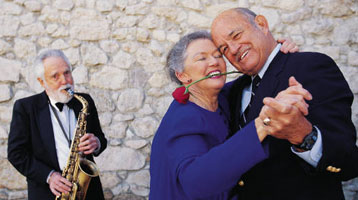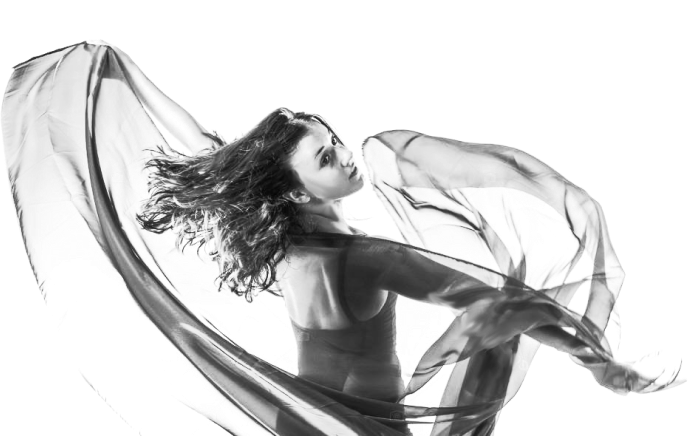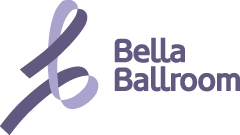
Swing Dance
Balboa
The Balboa is the perfect style of swing dance when there’s not a lot of space to dance! This dance was created with a crowded dance floor in mind, so it’s characterized by a close hold and subtle movements.
History of the Balboa Dance:
The Balboa was developed right in our own backyard! (For those who live in Orange County, California.) It is named after the Balboa Peninsula in Newport Beach, CA where the dance was invented before it spread through the beach resorts of the California coast finally reaching the wider Los Angeles area and beyond. The exact origins are unknown, but many believe the dance originated as early as 1915. The dance gained strong momentum between 1930 and 1940 as the craze for Swing music exploded. Early forms of Balboa dance are believed to have derived from the Charleston and Foxtrot, although some believe that Balboa Swing comes from Latin dances such as Rumba. Most will agree that despite the exact origins of the dance, the first Balboa dancers were influenced by the other popular dances of the time.
The Balboa is danced primarily in a close embrace with most of the movement occurring below the knees. The dance was originally developed as a response to overcrowded ballrooms where the swing-outs and breakaways of the Lindy Hop were often difficult and sometimes banned in some ballroom venues. The Balboa allowed dancers to stay in a close embrace and take up only a small space on the dance floor. Partners danced in an upright “chest to chest” position and remained in permanent contact. Originally there were no rotations or turns. The dance was simple in that it’s only possible changes were in direction and step variations. The simple nature of the dance was matched well for the popular quick and upbeat tempos of Swing music.
The Balboa Pavilion and The Rendezvous Ballroom were two of the first sites where Balboa swing took rise in Newport Beach. The Balboa Pavilion was constructed on the bay side of the Balboa Peninsula. It was originally used as a Victorian bathhouse in 1905. In 1923, the Pavilion was remodeled to be more suitable for dancing. The popularity of dancing at the Pavilion during this time lead to the building of the much larger Rendezvous Ballroom a few blocks away. The Rendezvous Ballroom was built in 1928 as a two-story dance hall that covered half a block. Up to 4000 people could be found dancing at it’s events on the 12,000 square foot dance floor accommodating over 1,500 couples. Most of the famous bands of the time played there including Bob Crosby, Tommy Dorsey, Woody Herman, Lionel Hampton, Benny Goodman, Nat King Cole, Bing Crosby, and more. In 1938, Look Magazine called the ballroom the “Queen of Swing”.
After some time, some dancers began to create more eccentric variations of Balboa swing that forced dancers to disconnect from their upright chest-to-chest dance position. Dancers were able to rotate, jump, kick, do stunts and more in this style of Swing which became known as “Bal Swing.” The dance was fiery and wild, and combined with the traditional Balboa footwork, kept the overall style and feeling of the original Balboa Swing spirit.
Balboa Dancing Today:
The Balboa is still a well-known dance style today and a popular swing dancing variation. For a long time, Balboa Swing dancing was not documented very well and the dance world was widely oblivious to the dance. Luckily, the dance never died fully out. Many of the original Balboa Swing dancers continued to follow their dancing passion and were discovered by Swing dance aficionados Sylvia Sykes and Jonathan Bixby in the early 1980s. Sykes and Bixby convinced many of the original Balboa Swing dancers to teach them Balboa Swing so that the dance could be preserved for future generations. They worked very closely with the dancer Maxie Dorf who was known as the “King of Balboa.” Dorf continued to teach the newer wave of Balboa fans in the late 1990s before he passed away in 2000. Sykes and Bixby continued to teach Balboa swing and presented dance workshops all over the world. The current Balboa dance scene owes the preservation and spread of the dance largely to these prevalent dancers.
Today, Balboa continues to spread throughout the world. Balboa Swing dancing is present on all the continents. The term “Balboa” is used to comprise both the original form of Balboa, commonly referred to as “Pure Bal” and Bal Swing. The newer generation mostly dances Bal Swing, a fiery stunt filled form of Balboa dancing, although there’s also growing interest in the subtleties of pure Balboa Swing.
Balboa classes are taught in dance schools and numerous dance festivals across the world. Competitions are also offered that challenge Balboa swing dance partners. Balboa Swing dance is often included in all encompassing swing dance festivals and events, and is also hosted in events that are purely for Balboa Swing.
Balboa Dance Music:
- “Sweet Georgia Brown” Benny Goodman
- “Rockin In Rhythm” Duke Ellington
- “Special Delivery Stomp” Artie Shaw
- “Minor Swing” Django Reinhardt
- “Rigamarole” Willie Bryant
- “I Gotta Swing” Blanche Calloway
- “Harlem Madness” Fletcher Henderson
- “Harlem Jump” Jack Teagarden
- “Swingin at the Daisy Chain” Yellow Jackets
- “Boogie Woogie” Count Basie
- “Back to Balboa” Stan Kenton
- “Santa Monica Jump” Slim Gaillard
- “Sugar Daddy” Harry James
- “Swingmatism” Jay McShann
- “One O’Clock Jump” Count Basie
- “Get Rhythm in Your Feet” Benny Goodman
- “On Your Toes” Bunny Berrigan
- “Moten Swing” Benny Goodman
- “Broad Jump” Ozzie Nelson
- “Zaggin, Zig” Benny Goodman
- “Twelft Street Rag” Sidney Bechet
- “Boo Woo” Harry James
- “Life Goes to a Party” Harry James
- “Bumble Bee Stomp” Benny Goodman
- “Jump the Blues Away” Count Basie
- “Texas Shuffle” Count Basie
- “Riff Time” Erskine Hawkins
- “I Want to be Happy” Ella Fitzgerald and Chick Webb
- “That’s a Naughty Waltz” Chick Webb
- “Slippin and Slidin” Sidney Bechet
- “Poppity Pop” Slim Gaillard
- “I Never Knew” Bunny Berrigan
- “No Name Jive” Gene Krupa
- “Kater Street Rag” Bennie Moten
- “Buck Dance Rhythm” Slim Gaillard
- “Jersey Jive” Ozzie Nelson
- “Sugarfoot Stomp” Benny Goodman
- “The Joint is Jumpin” Fats Waller
- “My Old Flame” Stan Kenton
- “Jivin Jarvis” Lionel Hampton
- “My Gal Sal” Harlan Leonard and His Rockets
- “Ball of Fire” Gene Krupa
- “Jaza A La Carte” Barney Bigard
- “Sugarhill Shim Sham” Rex Steward
- “Holiday for Swing” Erskine Hawkins


